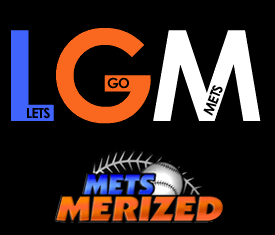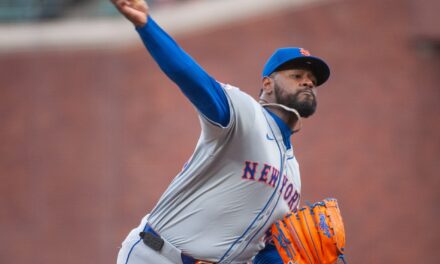
Jason Vargas finally threw a pitch in the sixth inning last night for the first time as a New York Met. While he would end up with a no-decision in the team’s 6-3 loss to the Baltimore Orioles, the lefty still put together a fine effort to keep his team in the game.
Granted, the final line – five hits, three walks, and just one strikeout in six innings of two-run ball – isn’t a whole lot to write home about. There were certainly flashes of Vargas’ night that better reflected his body of work across the 2018 season, and it remains to be seen if he has any chance of contributing in the rotation going forward. Nonetheless, if Vargas is able to turn in this kind of effort on a more regular basis, the Mets would certainly have an easier situation on their hands.
The Orioles, albeit already eliminated from playoff contention with a month and a half of baseball left, have the highest overall batting average in the majors (.282) since the start of the second half. They’re fifth in OPS (.817), just two points behind the second-place Boston Red Sox, who are on pace to win over twice as many games. Put another way, Vargas didn’t scrape his way ahead of a weak group of hitters by any means.
In fact, the night started with two Baltimore hits – one a single from Jonathan Villar, who was thrown out trying to get an extra base by Jose Bautista, and the other a single from Renato Nuñez. From there, Vargas retired his next seven hitters in a row, ending the third inning at a total of just 40 pitches (25 thrown for strikes).
As the fourth inning began and the order made its first rotation, Vargas began working with his offspeed pitches – one far more successful than another. While he managed to strike out Villar with a great changeup outside of the zone, the story with his knuckle curve was much different.
The curveball, much like his changeup, has often worked best as a bait pitch that, although weak, is still tough for hitters to resist flailing at if located properly. Nothing worked against the next set of hitters, and Vargas’ inability to spot the traps ultimately put him back on the hot seat after Nuñez walked on four pitches and Adam Jones doubled on a hanging curve to put runners in scoring position.
After a Mark Trumbo sac fly, Trey Mancini got a four-pitch pass of his own. A perfect 1-2 changeup to Tim Beckham was all it took to put the crisis to bed, as the lefty got a 5-3 putout to end the frame.
“I definitely felt like I was in command of what I was doing and able to make really quality pitches and get guys to do what I was looking for them to do,” Vargas said to reporters after the game. “That was nice to go out and feel like I did (tonight). Unfortunately, it hasn’t been that way for me this year. Tonight was a step in the right direction. I haven’t felt like this since some time last year.”
Vargas’ feel was immediately tested after the Mets grabbed a 2-1 lead in a long top of the fifth, but he again used the changeup to his scoreless benefit. Chris Davis lined out to right field on a generously down-and-in fastball, and Caleb Joseph managed a squeak hit of his own before reaching second on a sacrifice bunt. With Villar back at the plate and two away, Vargas again executed the pitches he needed to, inducing a popout to right on a low-and-away changeup.
The narrative again unfolded in a trying sixth inning capitalized by a game-tying home run from Jones. After Vargas walked Trumbo on four pitches (three fastballs), the Mets sent pitching coach Dave Eiland to chat and buy time as Bobby Wahl began warming up. The response was immediate and apparent, as Vargas worked a two-pitch double play out of Mancini to get out alive.
With a pitch value of -2.9 runs below average, Vargas’ changeup has generally played a rather toxic role in his worse starts, as hitters have seen through the speed contrast and stomped him through most of the season. If he can continue working with even one such offspeed pitch and develop a solid enough contrast to his fastball, Vargas may actually be able to make six-inning starts more consistently.
Of course, the Mets have fallen for his stop-and-start mechanism on many occasions this year, but they don’t seem keen on cutting him loose, for one reason or another. While he’s still here, it may be best to look at such strides with skeptical optimism, perhaps as manager Mickey Callaway has said himself:
“Obviously he’s going to be with us next year… He signed a two-year contract. We’d like to see some things. We’d like to know going into next season if he’s on his normal schedule he’s going to be the pitcher he has in the past and I think he will be.”















